Fostering a Lifelong Relationship With Your Natural Teeth

About Cavities
Can cavities be prevented?

There are always bacteria in the oral cavity.
By brushing your teeth correctly every day and having regular cleanings at the dental clinic, you can prevent cavities. Additionally, by applying fluoride to your teeth after cleaning, your teeth become stronger and less prone to cavities. To maintain the effect, it is recommended to apply fluoride regularly.
At our clinic, we would like to help prevent cavities by applying fluoride as needed.
The Importance of Prevention and Regular Check-ups
After treatment is completed, maintenance begins. We remove any plaque that was not completely removed by daily brushing, as well as tartar and biofilm that have accumulated. Regular maintenance is essential to keep your mouth clean.
About Maintenance

We thoroughly examine to see if there are any changes in your mouth. We will inform you of areas with plaque or potential cavities using a microscope or magnifying glass.
Cleaning helps maintain clean teeth and temporarily reduces the number of bacteria in the mouth.
By coming for regular checkups, you can prevent cavities and Gum disease.
Treatment Examples
| Before Treatment | After Treatment |
|---|---|
 |
 |
About Tartar and Biofilm
The bacteria (plaque) in the mouth is a "mass of living bacteria".
Since bacteria that cause periodontal disease exist within it, allowing the bacteria to build up over time can lead to gum disease.
Tartar is a mass of dead bacteria, so it is less likely to cause disease on its own, but the surface of tartar is rough, allowing periodontal bacteria to adhere to it.
Removing tartar can temporarily reduce gum inflammation, so it is important to remove tartar through cleaning.
Gum Examination

We perform a gum examination by inserting an instrument into the groove between the teeth and gums.
If brushing is not done properly, bacteria, tartar, and plaque attached to the groove between the teeth and gums can cause inflammation inside the gums, leading to bleeding and swelling.
Additionally, if plaque and tartar remain attached around the teeth for a long time, the alveolar bone supporting the teeth may dissolve, causing the teeth to become loose.
1. Interview
We conduct an interview to check if there are any changes in the condition of your mouth or body.
2. Oral Check
We guide you to the room and start the oral check (taking X-rays and recording the condition of your mouth. Are there any cavities? Are the gums swollen?)
3. Cleaning
We perform professional cleaning using specialized equipment. It is highly effective in preventing periodontal disease and cavities, and helps maintain clean teeth.
How to Use a Toothbrush, Floss, and Interdental Brush
Use an interdental brush to remove dirt from the interdental area that the toothbrush bristles cannot reach.
How to Use an Interdental Brush
1. Choose an interdental brush that is slightly thinner than the interdental area.
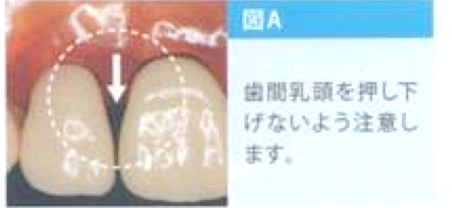
2. Insert the interdental brush along the boundary between the teeth and gums, without pushing down the interdental papilla.
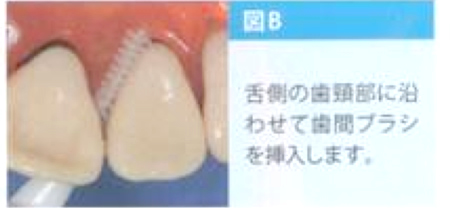
3. In that state, move the interdental brush slowly about 2-3 mm to brush.
※ There is no need to make large strokes with the interdental brush. Inserting it forcibly or making excessive strokes may damage the gums.
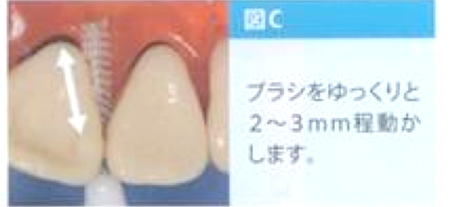
How to Use Floss

Wrap the cut dental floss around one middle finger 2-3 times. Pinch it with both thumbs and index fingers, stretch the dental floss tightly, and operate it. After cleaning one tooth, shift the used part and repeat the same operation with a new part for the next tooth.
※ Caution
If the dental floss gets caught, pull it out slowly. There may be a filling that is about to come off. If it gets caught in the same place every time, there may be a risk of cavities.
PMTC
Case 1
| Before Treatment | After Treatment |
|---|---|
|
|
Risks Associated with Treatment
There may be temporary tooth sensitivity.
General Dental Treatment
1 Protecting the Patient's Precious Teeth
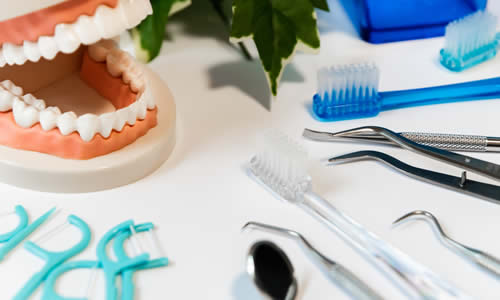
Thorough consideration to minimize pain for the patient
2 Fostering a Lifelong Relationship With Your Natural Teeth
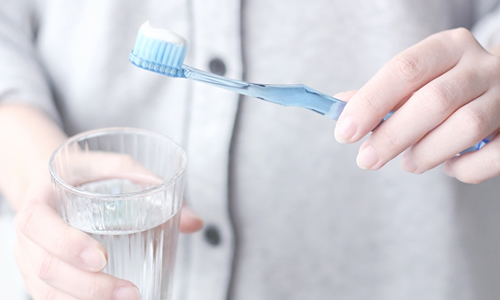
Specialized preventive dentistry to protect precious teeth with professional cleaning
3 Minimally Invasive Precision Treatment
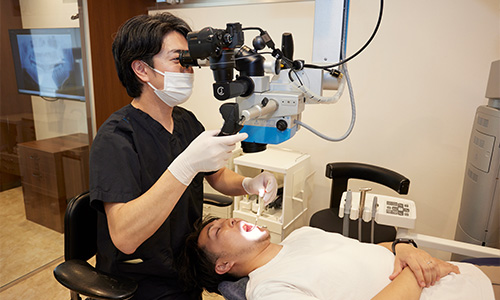
Direct bonding that minimizes drilling and reduces the number of treatment sessions
4 To Prevent Tooth Loss Due to Periodontal Disease
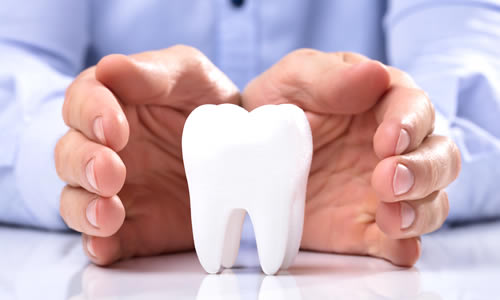
Periodontal treatment to protect the patient's teeth from periodontal disease, which is a cause of tooth loss
5 Aiming to Preserve the Nerve as Much as Possible

To live with your own teeth for as long as possible...
Our clinic considers this in our treatments.

